Brendan January - Cryptocurrencies and the Blockchain Revolution: Bitcoin and Beyond
Here you can read online Brendan January - Cryptocurrencies and the Blockchain Revolution: Bitcoin and Beyond full text of the book (entire story) in english for free. Download pdf and epub, get meaning, cover and reviews about this ebook. year: 2020, publisher: Lerner Publishing Group, genre: Romance novel. Description of the work, (preface) as well as reviews are available. Best literature library LitArk.com created for fans of good reading and offers a wide selection of genres:
Romance novel
Science fiction
Adventure
Detective
Science
History
Home and family
Prose
Art
Politics
Computer
Non-fiction
Religion
Business
Children
Humor
Choose a favorite category and find really read worthwhile books. Enjoy immersion in the world of imagination, feel the emotions of the characters or learn something new for yourself, make an fascinating discovery.
- Book:Cryptocurrencies and the Blockchain Revolution: Bitcoin and Beyond
- Author:
- Publisher:Lerner Publishing Group
- Genre:
- Year:2020
- Rating:3 / 5
- Favourites:Add to favourites
- Your mark:
- 60
- 1
- 2
- 3
- 4
- 5
Cryptocurrencies and the Blockchain Revolution: Bitcoin and Beyond: summary, description and annotation
We offer to read an annotation, description, summary or preface (depends on what the author of the book "Cryptocurrencies and the Blockchain Revolution: Bitcoin and Beyond" wrote himself). If you haven't found the necessary information about the book — write in the comments, we will try to find it.
Cryptocurrencies and the Blockchain Revolution: Bitcoin and Beyond — read online for free the complete book (whole text) full work
Below is the text of the book, divided by pages. System saving the place of the last page read, allows you to conveniently read the book "Cryptocurrencies and the Blockchain Revolution: Bitcoin and Beyond" online for free, without having to search again every time where you left off. Put a bookmark, and you can go to the page where you finished reading at any time.
Font size:
Interval:
Bookmark:


Text copyright 2021 by Brendan January
All rights reserved. International copyright secured. No part of this book may be reproduced, stored in a retrieval system, or transmitted in any form or by any meanselectronic, mechanical, photocopying, recording, or otherwisewithout the prior written permission of Lerner Publishing Group, Inc., except for the inclusion of brief quotations in an acknowledged review .
Twenty-First Century Books
An imprint of Lerner Publishing Group, Inc.
241 First Avenue North
Minneapolis, MN 55401 USA
For reading levels and more information, look up this title at www.lernerbooks.com .
Main body text set in Futura Std
Typeface provided by Adobe Systems.
Library of Congress Cataloging-in-Publication Data
Names: January, Brendan, 1972 author.
Title: Cryptocurrencies and the blockchain revolutio n : Bitcoin and beyond / Brendan January.
Description: Minneapolis, M N : Twenty-First Century Books, [2021 ] | Includes bibliographical references and index . | Audience: Ages 131 9 | Audience: Grades 101 2 | Summary: When Bitcoin was first released in January 2009, each digital coin was worth only a few pennies. A single Bitcoin is now valued at over ten thousand dollars. This book examines digital cryptocurrency and the blockchain technology that makes them possible. Provided by publisher.
Identifiers: LCCN 2019046569 (print ) | LCCN 2019046570 (ebook ) | ISBN 781541578777 (Library Binding ) | ISBN 781728401591 (ebook)
Subjects: LCSH: BitcoinJuvenile literature . | CryptocurrenciesJuvenile literature . | Blockchains (Databases)Juvenile literature.
Classification: LCC HG1710 .J36 2021 (print ) | LCC HG1710 (ebook ) | DDC 332.4dc23
LC record available at https://lccn.loc.gov/2019046569
LC ebook record available at https://lccn.loc.gov/2019046570
Manufactured in the United States of America
1-46980-47849-4/16/2020
I n January 2009, a mysterious software developer known as Satoshi Nakamoto exchanged a specially designed file with another developer. The thirty thousand lines of code were a form of digital currency that Nakamoto had proposed several months earlier in a paper titled Bitcoin: A Peer-to-Peer Electronic Cash System.
This was the first Bitcoin transaction, but few people noticed it at the time. Through most of 2009, no one would value a single Bitcoin at more than just a few pennies. In 2010 a programmer completed the first known commercial Bitcoin transaction: the delivery of two pizzas for 10,000 Bitcoins. Seven years later, the Bitcoin used to buy those two pizzas was worth more than $100 million. The day that the transaction occurredMay 22would be celebrated by cryptocurrency enthusiasts as a holiday: Bitcoin Pizza Day.
The journey of Bitcoin, from an obscure program to the height of global finance, is an extraordinary and controversial story. Bitcoin is the most well-known cryptocurrency. A cryptocurrency, in simple terms, is a digital asset that relies on the internet and computers to verify its value and ownership. It is designed to be used like money. According to supporters, cryptocurrencies represent a new way of storing value and conducting business, one that exploits the ease and reach of technology. In this vision, cryptocurrencies will replace paper and coin currencies. Costly, slow intermediaries will be removed from the transaction process. Tyrannical governments and corrupt institutions will be sidelined. Individuals will freely conduct transactions directly with one another in a framework that establishes and maintains trust.

Although Bitcoin is a form of digital currency, some physical coins have been produced as collectors items. The physical coin can come preloaded with the code for a digital Bitcoin or can come blank so that buyers can upload their own Bitcoin to it.
At the heart of these claims lies the infrastructure beneath Bitcoin: blockchain. Blockchain is a decentralized computer system that can guarantee the authenticity of data. In effect, blockchain establishes the truth. Blockchain can validate transactions between organizations or peoplefrom concert tickets, to supply chains, to legal documents such as property deeds, stock certificates, or identification cards.
These extraordinary claims have drawn skepticism from economists, technology experts, and financial regulators. They deride cryptocurrencies as at best a fad and at worst a fraud. In their view, Bitcoin and its herd of copycats are driven by speculators hoping to bid up prices before dumping them, leaving investors with losses. Blockchain ignores the value and stability that intermediaries bring to society and requires a deep understanding of computer code. It assumes technology can solve human nature.
Who is right? Well find out, because if theres anything certain about Bitcoin, cryptocurrencies, and blockchain, its that they are not going away anytime soon. Rather, they are at the center of debates about the role of technology in human society. Cryptocurrencies and blockchain can play a critical role in the futurefor better or for worse.
Bitcoin and Blockchain
M oney is an essential component of civilization. It acts as a medium of exchange for individuals, enabling them to buy and sell goods and services. When it functions properly, money also allows individuals to store value over time.
Over thousands of years, people have employed many different kinds of moneyfrom beads to metal coins and from shells to coffee beans. Some forms of money are more effective than others. To be a really good currency, wrote economist and Financial Times columnist Martin Wolf, it needs to be durable, portable, divisible, uniform, limited in supply, and acceptable.
Today, most people use fiat money, or what we would recognize as coins and paper bills. Fiat money is made legal tender, or currency, by government regulation. This money actually has no intrinsic value on its own. People give and receive money for real goods and services because it is a socially accepted symbol of value. Citizens must also use it to pay their taxes.
However, it can be unnerving to realize that fiat money is based mostly on trust. Citizens have to believe that the government wont simply make more when it needs to. When the government prints too much money, inflation rises. The value of the currency declines because it doesnt buy as much as it used to. Hyperinflation occurs when the currency loses its value. When a society loses faith in its currency, the results can be catastrophic. Citizens cant afford food, savings are destroyed, and law and order breaks down.

There is no way to track the origins and history of a paper bill, making it much easier to counterfeit than cryptocurrency coins, each of which can be fully tracked on the blockchain.
The root problem with conventional currency is all the trust thats required to make it work, said researchers Stanton Heister and Kristi Yuthas. The central bank must be trusted not to debase the currency, but the history of fiat currencies is full of breaches of trust.
Font size:
Interval:
Bookmark:
Similar books «Cryptocurrencies and the Blockchain Revolution: Bitcoin and Beyond»
Look at similar books to Cryptocurrencies and the Blockchain Revolution: Bitcoin and Beyond. We have selected literature similar in name and meaning in the hope of providing readers with more options to find new, interesting, not yet read works.
Discussion, reviews of the book Cryptocurrencies and the Blockchain Revolution: Bitcoin and Beyond and just readers' own opinions. Leave your comments, write what you think about the work, its meaning or the main characters. Specify what exactly you liked and what you didn't like, and why you think so.

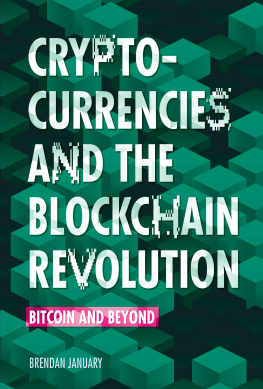


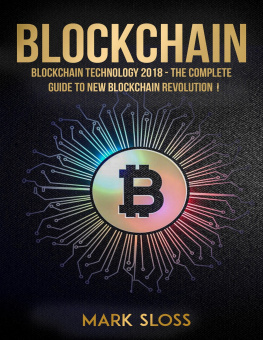
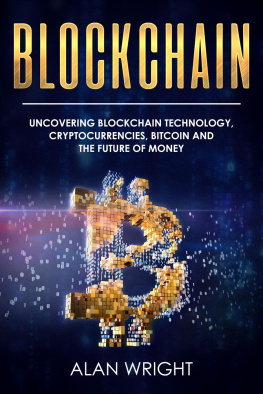

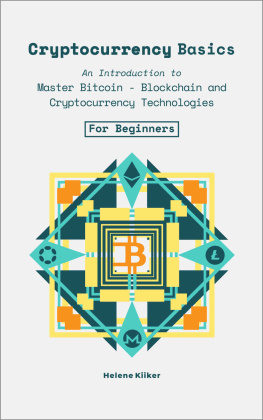
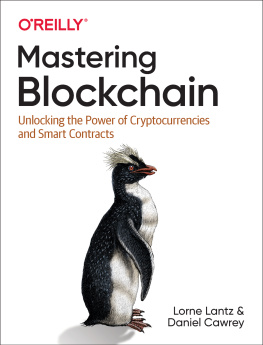

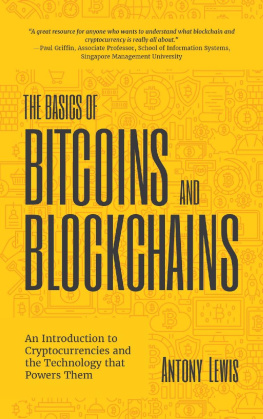
![Kirankalyan Kulkarni [Kirankalyan Kulkarni] - Learn Bitcoin and Blockchain](/uploads/posts/book/119684/thumbs/kirankalyan-kulkarni-kirankalyan-kulkarni-learn.jpg)
![Arvind Matharu [Arvind Matharu] - Understanding Cryptocurrencies](/uploads/posts/book/119680/thumbs/arvind-matharu-arvind-matharu-understanding.jpg)